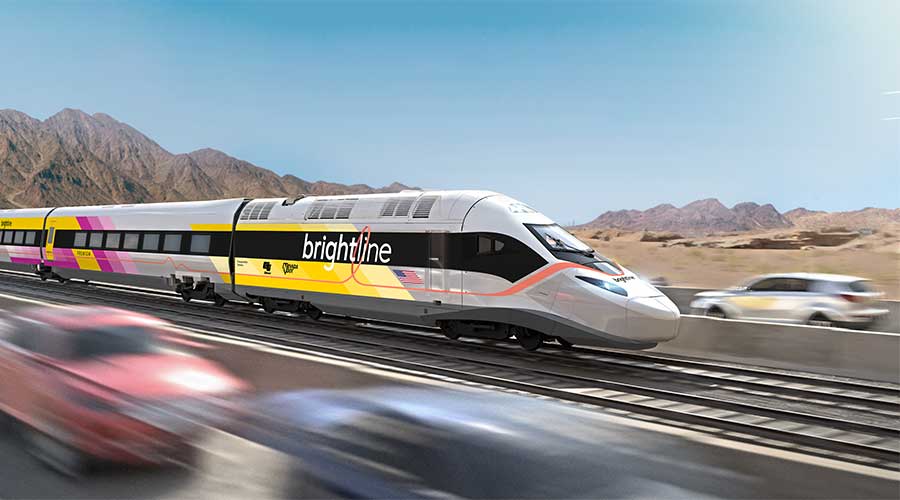Stay updated on news, articles and information for the rail industry
September 2010
Rail News: Passenger Rail
High-speed rail: U.S. High-Speed Intercity Passenger Rail program 'past the point of no return,' FRA's Szabo says
by Angela Cotey, Associate editor
It's been a year and a half since President Obama signed the American Recovery and Reinvestment Act of 2009 into law. Since then, benefits have been extended for unemployed workers, tax cuts have been provided for many families and businesses, and dozens of road and bridge construction projects have begun.
But it's not as easy to measure how other stimulus-funded programs are faring, such as the High-Speed Intercity Passenger Rail (HSIPR) program, which received $8 billion. At the time the stimulus bill was announced, most high-speed rail projects hadn't gotten beyond the initial planning phase — or even the "should we pursue this?" phase. So, much of the HSR work being done now is taking place behind the scenes as states begin environmental and engineering work. And those states that do have shovel-ready projects are just now starting construction — provided they've got federal funds in hand.
Learn As You Go
It'll take some time for all affected states to receive their promised high-speed stimulus dollars. State and Federal Railroad Administration (FRA) officials are ironing out grant agreements that detail exactly how much HSIPR funding a state will receive and what it will be used for. Officials on both sides are feeling their way through the process — and that includes not only managing a new grant program (HSIPR is the first large-scale grant program FRA has overseen), but also dealing with staffing issues, host railroad agreements and local opposition, to name a few.
But even if it's not always visible, or quick, progress is being made on the high-speed rail front. As of mid-August, the FRA had obligated about $585 million in stimulus funds for 13 projects, FRA Administrator Joseph Szabo said during an Aug. 20 press teleconference. As a result, several states have begun or soon will begin station projects, North Carolina is rehabilitating locomotives and Florida launched on-site environmental work for its Tampa-Orlando corridor.
The FRA is set to obligate an additional $209 million in stimulus dollars for seven projects with states that have almost completed the formal grant agreement process. And, a handful of states are completing "technical work" to advance the grant process for another seven projects totaling $120 million. The FRA has until Sept. 30, 2012, to obligate all the stimulus funds.
"We track almost daily our obligation rate and where projects are at," said Szabo. "We're ahead of our goal."
The FRA is administering other grants through the HSIPR program, as well. On Aug. 6, the agency accepted applications for $2.3 billion in FY2010 appropriations for high-speed and intercity passenger rail. The agency received 77 applications from 25 states totaling more than $8.5 billion, including 20 applications from 10 states totaling $7.8 billion for high-speed rail corridor development programs, and 57 applications from 18 states totaling $700 million for smaller, individual projects within rail corridors that are ready to begin construction. FRA officials expect to announce funding recipients in fall.
The agency also expects to name grant recipients in fall for $65 million in high-speed construction funds and $50 million in planning dollars.
The Freight Railroad Component
Meanwhile, the FRA is working to address stakeholder agreement issues for states that propose running higher-speed service on freight tracks, and the host railroads that own the tracks. In May, the administration released stakeholder agreement guidance, but the document "got out without the appropriate level of vetting," says Szabo.
"It's important in any partnership that you properly respect your partners and we know that with the initial guidance we put out, we didn't do a good job respecting our partners there," said Szabo.
The FRA since has rescinded the guidance and is working with the Association of American Railroads (AAR) to develop a new document. The FRA now holds monthly conference calls with AAR officials and hopes to have a draft of the revised guidance sometime this month, Szabo said.
Despite the steep learning curve that comes with managing a multi-billion-dollar program, Szabo believes the HSIPR program is advancing at an appropriate pace.
"We're past the point of no return," he said. "If you look at the level of enthusiasm from all states, how strongly oversubscribed the program is, the opinion polls and the bipartisan support ... we're well on our way."


 2025 MOW Spending Report: Passenger-rail programs
2025 MOW Spending Report: Passenger-rail programs
 Gardner steps down as Amtrak CEO
Gardner steps down as Amtrak CEO
 Guest comment: Oliver Wyman’s David Hunt
Guest comment: Oliver Wyman’s David Hunt
 Women of Influence in Rail eBook
Women of Influence in Rail eBook
 railPrime
railPrime








